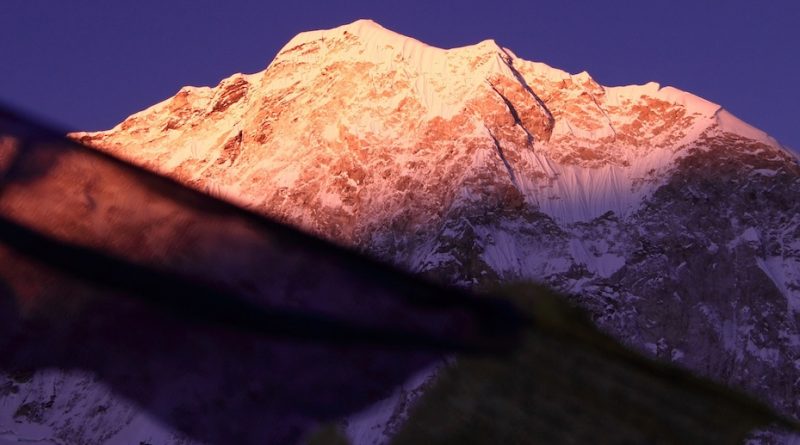Yesterday, we ran the first part of an interview with SummitClimb Europe Director and guide Felix Berg about leading two recent first ascents in the Shimshal Valley in Pakistan and the current situation in the Himalaya. Here is the rest of that conversation.
ExWeb: Do you have any hopes of guiding expeditions to Nepal this season?
We’re still hopeful that the rules for international travelers will change in time to send teams to Ama Dablam and Baruntse. If so, it will not be a crowded season, which actually decreases the health risks. We have, however, dropped Manaslu because it’s a longer expedition and it’s already too late to sign up a full complement of members. On smaller mountains, you can extend the season until late November, when it’s usually colder but with stable weather.
ExWeb: What are your expectations for 2021?
I think recovery will be rather slow. Hopefully by 2121, there will be some kind of vaccine and easier traveling regulations. We do have people interested, but most of them are clients who postponed their 2020 trips. We have had very few new queries for 2121.
Eight-thousand-metre expeditions are difficult because they are very long and require months off work, plus possible quarantines when returning home. Also, the economic situation doesn’t help.
ExWeb: So it will not be crowded as the Alps are right now? We won’t see queues on Everest in 2021?
Well, I guess people will flock to the most popular places: Everest Base Camp and the Seven Summits, mostly in autumn –- but not in general, there are too many factors against it.
ExWeb: It’s been a difficult year for all expedition outfitters. Did SummitClimb switch from the Himalaya to the Alps?
We haven’t done much because we don’t have an alpine program, except for some preparatory climbs before heading for other ranges. The market in the Alps is already crowded. We are, however, operating some treks in Africa, because Tanzania, Kenya, Uganda are all open. Currently, we have our second group on Kilimanjaro and, wow, they were the only ones there on summit day! A once-in-a-lifetime experience.
ExWeb: Aside from guiding, you’re also active as an independent climber. Anything in mind?
Nothing specific yet, but since we talked about Pakistan, I’ve never been to the Batura area, and going back to Shimshal, specifically to the virgin 7,000’ers on the southern side of the valley, would be interesting. The problem is that peaks are very hard to reach.

Adam Bieleki (left) and Felix Berg on Lantang Lirung in 2019. Photo: Adam Bielecki
ExWeb: Last year, you were on Langtan Lirung with Adam Bielecki.
Yes, we were. Our original plan was to go on to Annapurna afterward, but it never happened because we didn’t manage Lantang Lirung. These things happen when you climb independently, and on that occasion, we were really unlucky. We had to wait too long for dangerous conditions on the mountain to settle down, and then the weather was unforgiving. But Annapurna is still on my mind: I just don’t know when I’ll have a chance to get there.
ExWeb: What about the Himalayan winter? Have you ever considered it?
Winter? Why? It’s cold!! [laughs]. People are always asking me about it, but Himalayan winter climbing is more for the professionals… or for professional wannabes who want to do that winter K2 or winter Everest thing, so they can get the media attention they want. But in winter, honestly, it’s a very long way to the top and it’s very dangerous and very cold, so I’d rather go to a place with more chances to summit and less risk.
In the end, I prefer to actually climb, rather than just suffer. Climbing an interesting route in good conditions is challenging enough at high altitude, and there’s still plenty to be done. I mean, when was the last time anyone climbed Everest by a non-standard route? In the Himalayan winter, I’d rather do a different kind of expedition, such as ski touring on lesser mountains, say those 4,000m peaks which are covered in snow in winter. Logistics would be easier too, if lodges could be used as Base Camp.
ExWeb: What would you tell people who say that climbing abroad at this time is irresponsible, because of the risks of either getting sick or spreading the disease?
I think it is partly a question of using common sense rather than waiting for guidelines from the government and then following orders without thinking, especially since each place has different guidelines. This seems to be encouraging some nationalistic ideas, like countries closing borders to protect their citizens from outsiders when in fact, the virus is everywhere within that country. Going into a supermarket could be much more dangerous than wandering in isolated mountains with no one else around.
In my opinion, personal responsibility should be based on: “I do not want to get it and I do not want to give it to anyone else.” In Pakistan, the precautions were as good as they could have been, and the real danger for us was the rains and floods on our way back, which actually did kill many people. For a climbing expedition, the risks of COVID are so small compared to the usual dangers we face every time we go there…Then, it’s important to evaluate the situation in a specific place. For example, there are places where I wouldn’t currently go — South America, for instance — so as tour operators, we have proactively cancelled out trips there.






